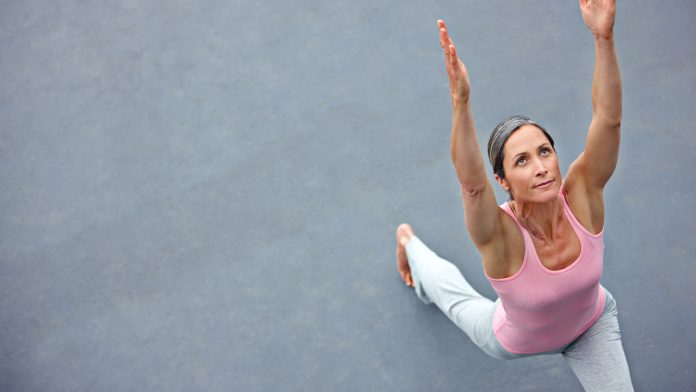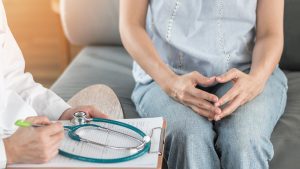
Dr Louise Newson, GP and menopause expert explains how hormonal changes around the menopause can have a direct impact on bone health.
Understanding potential risk factors associated with osteoporosis is vital in order to ensure patients are correctly diagnosed and receiving the appropriate care. While hormonal changes can dramatically impact women’s bone health, all too often the symptoms and impact of perimenopause and menopause are not given adequate attention, and can be overlooked or misdiagnosed by medical professionals. This can leave patients feeling uncertain and uninformed. Although osteoporosis can affect both men and women, women are more susceptible to loss of bone strength due to a decline in oestrogen, a hormone which is vital for maintaining bone density.
To discuss the impact that the menopause can have on bone health, HEQ spoke to Dr Louise Newson who is a GP, author, and leading menopause specialist. As well as being the founder of menopause and wellbeing centre, Newson Health, in 2020 Dr Newson launched the ‘Balance’ app which offers free support and advice for menopausal women. With a wealth of knowledge in how the menopause can affect both mental and physical wellbeing, Dr Newson is devoted to increasing awareness and empowering women to feel confident in understanding what perimenopause and menopause are, the associated symptoms and the available treatments that can enable them to seek advice and optimise their overall health.
How common is osteoporosis and how is it related to the menopause?
An estimated three million people in the UK are thought to have osteoporosis, a condition that weakens the bones and makes them more likely to break.1
More than 500,000 people receive hospital treatment for fragility fractures (bones that break after falling from standing height or less) every year because of osteoporosis, according to NHS.uk.2
Yet alarmingly, osteoporosis is often referred to as a ‘silent disease’ as so few people are aware that they have the condition until they suffer a fracture.
The risk factors for osteoporosis are numerous, but gender and age are two key risks. An estimated one in three women over 50 worldwide will develop osteoporosis, compared to one in five men.3
And this is where the menopause comes into play.
The menopause is when the ovaries stop producing eggs and as a result, levels of hormones, oestrogen, and progesterone fall. As well as being a key reproductive hormone, oestrogen helps to protect the bones and maintain bone density. So, when oestrogen levels decline during the menopause, this has a direct impact on bone health.
Our bones are a living tissue, with cells in the body constantly laying down new bone (osteoblasts) and other cells removing old bone (osteoclasts). Until the age of 30, our bodies normally build more bone than is lost.
However, during the menopause, bone breakdown occurs at a faster rate than bone build up, resulting in a loss of bone mass. The stark fact is that around 10% of a woman’s bone mass is lost in the first five years of the menopause alone.
And while the average age of the menopause in the UK is 51, it is important to stress menopause does not only affect women in mid-life. According to the charity, Daisy Network about one in 100 women will go through the menopause before the age of 40. This is known as premature ovarian insufficiency. Falling oestrogen levels earlier than the average age of the menopause means younger women are at increased risk of developing osteoporosis.4
Aside from the menopause, what are some other risk factors associated with osteoporosis?
Other risk factors include:
- Family history of osteoporosis;
- Some medications, including anti-epileptic drugs, glucocorticoids, and breast cancer treatments such as aromatase inhibitors;
- A low body weight: people who weigh less are more likely to have less bone tissue; and
- Smoking and heavy alcohol intake.
For women going through the menopause, what preventive measures can be taken to lessen their risk of developing osteoporosis?
Oestrogen receptors are present in every cell of the body, meaning oestrogen plays a key part in maintaining everything from cognitive function, mood, immune function, and cardiovascular health.
A lack of oestrogen can present with numerous troublesome symptoms, such as hot flushes, mood changes, joint pain, and urogenital symptoms. A crucial first step for women to safeguard their future health and reduce the risk of developing osteoporosis is to recognise these key signs and symptoms of menopause, to ensure prompt treatment.
Yet a lack of education, and a societal tendency to view the menopause as a ‘taboo’ subject means many women simply do not recognise these symptoms are due to menopause. Many will often put symptoms down to the stresses and strains of everyday life and go on and suffer in silence.
Meanwhile, GPs receive no formal training around the hormonal changes women experience during midlife. This can lead to misdiagnosis, delays in treatment and a lack of vital support for patients. In my 2021 survey of 5,187 British women in their 40s and 50s, 74% had suffered symptoms, such as hot flushes, for around 12 months before they were diagnosed as perimenopausal or menopausal.5
A simple and effective way for women to educate themselves and track symptoms is by downloading my free app, Balance, (https://balance-app.com). Balance contains advice, articles, and allows women to record the type and severity of their symptoms to create a personalised report to bring to medical appointments to help aid diagnosis.
Once it is confirmed a woman is perimenopausal or menopausal, treatment should be considered to safeguard health, including reducing the risk of osteoporosis.
Put simply, menopause is as a long-term hormone deficiency, and the optimum treatment is hormone replacement therapy (HRT). Correcting the hormone deficiency not only alleviates symptoms, but it will protect the bones from weakening due to lack of oestrogen and reduce the risk of fragility fractures. HRT has also been shown to protect against cardiovascular disease, diabetes, and Alzheimer’s disease.
Women who go through an early menopause and do not receive treatment with HRT have an even greater increased risk of osteoporosis because their oestrogen levels remain lower for longer, so hormone replacement is even more crucial for younger women.
Having a holistic approach to menopause will also help to reduce the risk of osteoporosis, with a good diet and regular exercise are essential for all women, regardless of whether or not they take HRT.

A balanced diet rich in calcium will help build and maintain bones – to put it into perspective, some 99% of calcium in the body is stored in the bones. Current guidelines state women aged 18 to 64 need about 700mg of calcium a day, which can be achieved by eating a balanced diet with dairy, leafy green vegetables, beans, nuts and fish.6
Vitamin D supplements, as the vitamin is difficult to obtain through diet alone, should also be considered as it aids calcium absorption (guidelines state everyone over the age of one should get about 10 micrograms of vitamin D a day).7
Bones get stronger as you use them and give them work to do. For exercise to be most effective at keeping bones strong, women should look to combine weight-bearing exercise with impact and muscle strengthening exercise. Weight-bearing exercise is when you are standing up and holding your own weight, the impact comes with movement and pressure on our joints. Examples include walking, jogging, dancing, or tennis.
Strength exercises are when you use your muscles to pull on the bones. The bones will respond to this by renewing themselves or maintaining or improving their strength. Examples of strength activity include yoga, Pilates or exercises involving weights or resistance bands.
What are the key benefits of post-fracture care co-ordination programmes, also known as Fracture Liaison Services, for patients who have or may have osteoporosis?
Any service that promotes good bone health and picks up potential problems earlier has to be a good thing.
The Fracture Liaison Service Database’s 2019 Commissioner’s report stated NHS trusts could save £2.1m by preventing older people who have already broken a bone from breaking another.8
Programmes such as Fracture Liaison Services will benefit patients by taking a close look at risk factors for future fractures, but also empower patients with advice on diet and lifestyle.
Should high-risk patients presenting with fractures be screened for osteoporosis as a matter of course?
I would recommend all menopausal women, whether they have a history of fracture or not, consider a bone density scan (DEXA scan). The scanner also uses the bone density measurement to compare against people of the same age and sex, giving a good indication as to whether a woman is at risk of, or already has developed, osteoporosis. It can either pick up problems or equally, give a woman peace
of mind.
Under NHS criteria women may be offered a DEXA scan if they have already broken a bone, have arthritis, have been on oral glucocorticoids for more than three months, had the menopause under 45 years due to natural onset, surgery, or treatments for cancer, have large gaps (of more than a year) between periods, if they are postmenopausal and also smoke or drink heavily, or have a body mass index of less than 21.
Are there any notable developments or current issues in osteoporosis research or treatment which you would like to highlight?
As a menopause specialist, I am keenly aware of the lack of female-focused research and clinical trials. Menopause should not be brushed aside as mere ‘women’s problems’: it is a public health issue.
Frustratingly, there is very little research regarding female hormones and osteoporosis prevention and treatment. Even the osteoporosis guidelines do not mention how important HRT is at improving bone density. Education about safe HRT prescribing is still lacking for osteoporosis specialists which means that many women who are at risk of osteoporosis or have osteoporosis are being denied HRT for the wrong reasons. Clearly this urgently needs to be changed.
References
- Svedbom A, et al (2013) ‘EU Review Panel of IOF. Osteoporosis in the European Union: a compendium of country-specific reports’. Archives of Osteoporosis. 8(1-2):137
- www.nhs.uk/conditions/osteoporosis/
- www.osteoporosis.foundation/facts-statistics/epidemiology-of-osteoporosis-and-fragility-fractures
- https://pubmed.ncbi.nlm.nih.gov/17476146/
- www.menopausedoctor.co.uk/news/delayed-diagnosis-and-treatment-of-menopause-is-wasting-nhs-appointments-and-resources
- Public Health England (2016) Government recommendations for energy and nutrients for males and females aged 1 – 18 years and 19+ years https://assets.publishing.service.gov.uk/government/uploads/system/uploads/attachment_data/file/618167/government_dietary_recommendations.pdf
- Scientific Advisory Committee on Nutrition (2016) Vitamin D and Health https://assets.publishing.service.gov.uk/government/uploads/system/uploads/attachment_data/file/537616/SACN_Vitamin_D_and_Health_report.pdf
- www.rcplondon.ac.uk/projects/outputs/fracture-liaison-service-database-commissioners-report-2019
This article is from issue 19 of Health Europa Quarterly. Click here to get your free subscription today.






















